Dungeons of Hinterberg is part dungeon-crawler and part life-simulator, sprinkled with the indie spirit of the Life is Strange games. More importantly, it feels like an offspring of Zelda and the Persona games, but one that is more relaxed and less outgoing.
I was pleasantly surprised by how unabashedly Dungeons of Hinterberg wears its many notable inspirations and how well it interweaves them into its varying gameplay systems.
While some of its ideas don’t feel as original as many modern indie titles, Dungeons of Hinterberg still effortlessly manages to carve an experience that’s worth seeing through to the end.
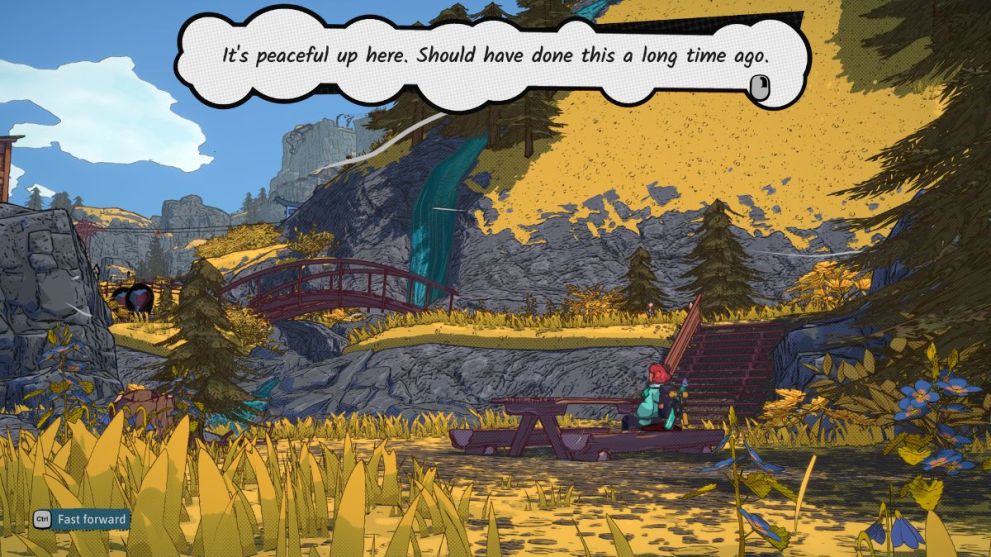
Dungeons of Hinterberg takes place in a not-so-quaint mountain village in the Alps. Ever since the magical dungeons appeared, Hinterberg had become a highly commercialized adventure spot for thrill seekers or slayers who come to overcome obstacles and slay mythical monsters residing in and outside these magic-infested dungeons.
You play as Luisa, a burned-out lawyer from Vienna who has just arrived in the village of Hinterberg seeking a much-needed respite from her chaotic city life.
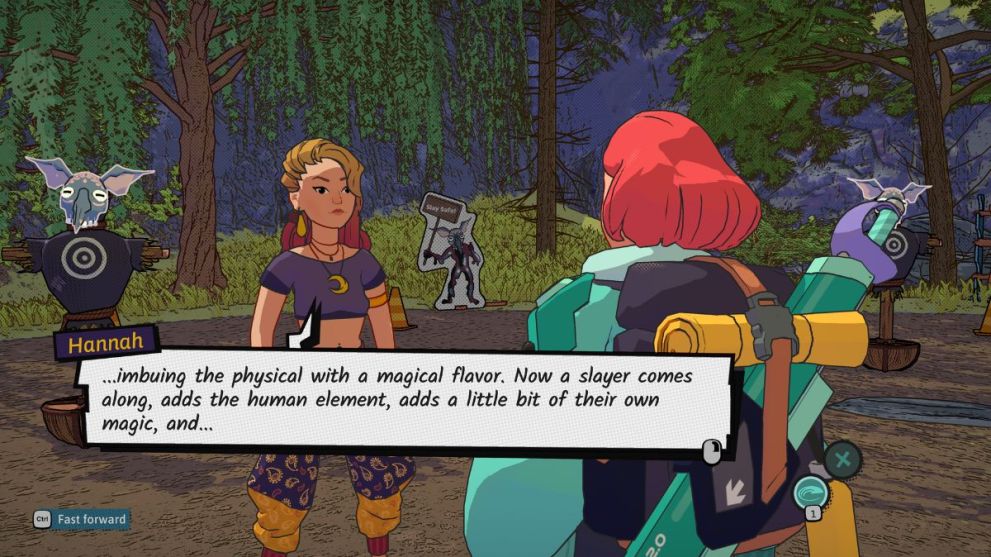
Like many others in Hinterberg, Luisa finds herself immensely fascinated by the appearance of something unworldly in an otherwise too-real world and seeks to explore it with all her heart.
That inexplicable drive to pursue something magical, both literally and symbolically, pushes Luisa (you) to explore its many intricate dungeons, bond with distinguished locals and tourists, and spend peaceful moments alone soaking in the breathtaking cel-shaded vistas and contemplating life.

All these gameplay systems are part of a time structure, which is very reminiscent of the modern Persona games. You spend the mornings in one of the four regions of the Hinterberg exploring dungeons, completing quests, or simply relaxing at one of the many chill spots scattered across the map.
Indulging in any of those activities fast forwards the time to the evening when you can explore the town, hang out with NPCs, or participate in one of the few solitary activities like watching a movie in the local theater or taking a boat ride. Finally, at night, in your bedroom, you can read a book, watch TV, or go straight to bed.
Having a time constraint adds a sense of realism to this holiday adventure, not to mention more weight to your everyday actions. This creates an adventurous yet relaxing holiday simulator, which is made more distinctive thanks to Dungeons of Hinterberg’s refreshing Moebius-esque art style that’s easy on the eyes.
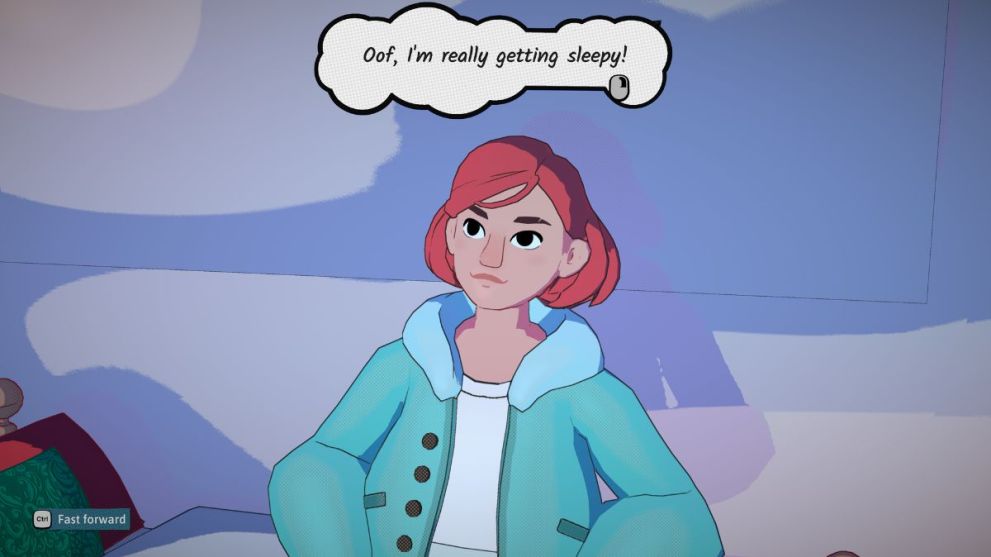
Through its serene, existential indie movie-style opening, Dungeons of Hinterberg quickly sets the tone for the kind of experience it’s about to offer. However, much of that expectation flutters and reaches new heights as you get to know more about Luisa’s past, form bonds with Hinterberg’s many residents, and explore its diligently crafted dungeons.
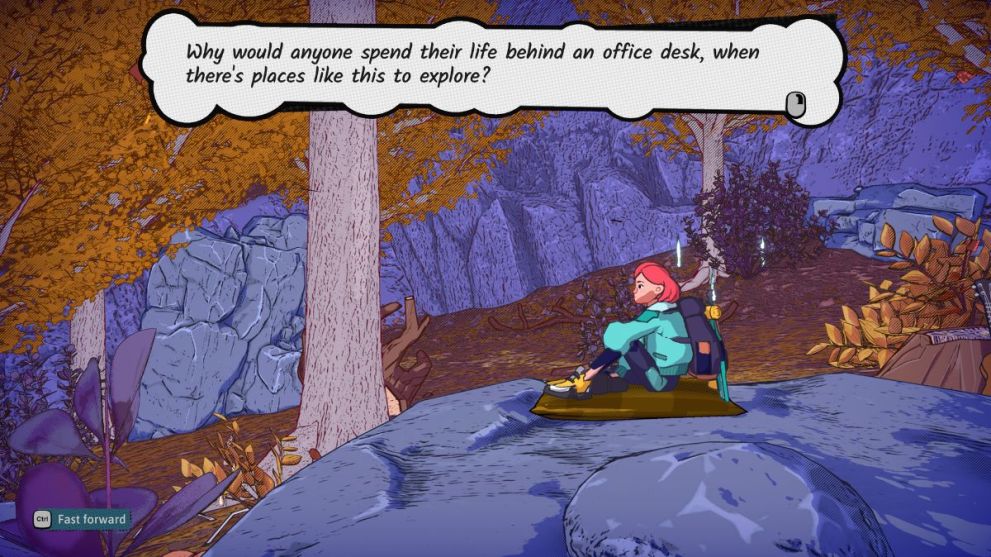
The story kicks off as an adventurous escape for Luisa from her everyday life, but after an unruly incident in the starting dungeon, it quickly becomes an investigative trip about finding the nature of the magic that resides in the area and the corrupted forces that are trying to exploit it.
Beneath the glamorous outlook of the village’s slaying culture, something sinister is brewing that threatens not just Hinterberg but the entire balance of the world.
The story ventures off in awfully predictable directions that are very common among tales of quaint mountain villages that were turned into commercialized hotspots.
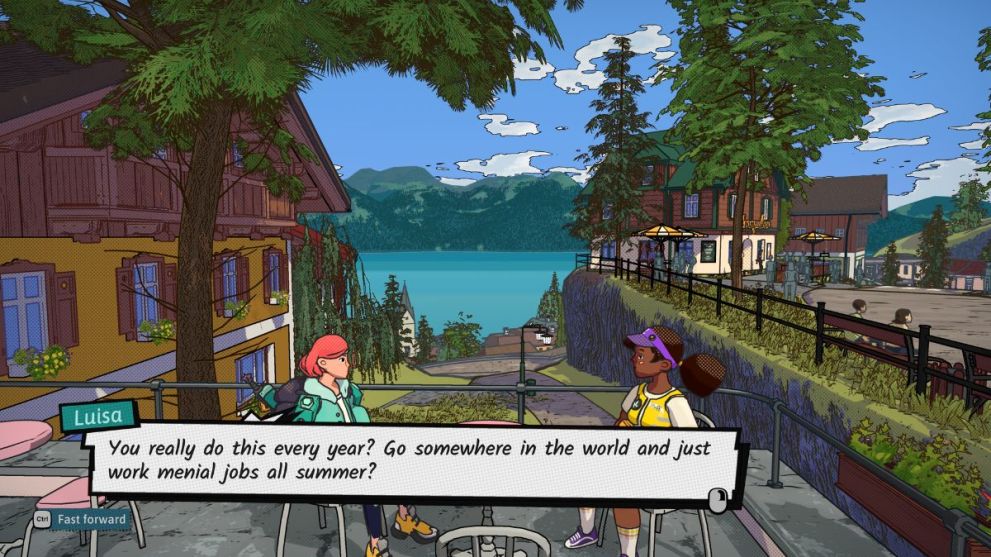
There is a pivotal moment halfway through the story where it feels like it would branch off in two different directions, giving you more freedom to choose your own path as it does in other areas of the game, but plot-wise, Dungeons of Hinterberg is a pretty linear experience.
That’s okay, though, because the narrative beats in Dungeon of Hinterberg are just a tool to improve your bond with other characters and influence your everyday actions in Hinterberg.
It’s not the overarching narrative but the idea of simply existing in Hinterberg that compels you to push forward.
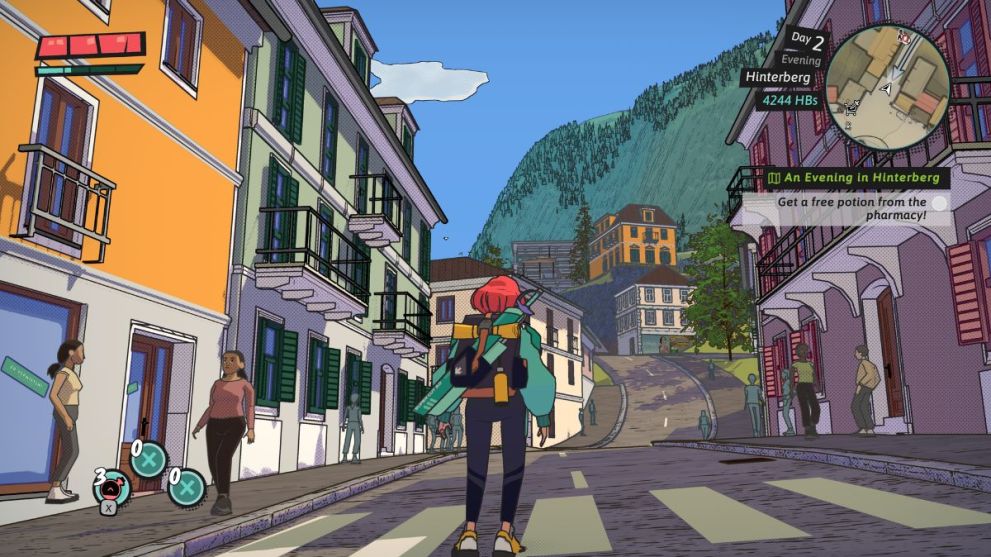
Architecturally, Hinterberg feels like a genuine mountain village. From its slanted streets to brightly colored shops, distant mountain passes to the gothic clocktower, everything feels right in place. It’s not too big or too small; it just feels sufficient. By the tenth day, I had involuntarily memorized every street in Hinterberg and found great comfort in knowing how familiar I had become with this place.
Hinterberg is an incredibly comforting place to be in. This is primarily evident from Luisa’s many internal introspective monologues (more on that later) and her philosophical conversations with fellow tourists, and also through the game’s vibrant but non-contrasting color palette and its ambient pop score that gently breeze past your ears.
Everything is downright endearing in Hinterberg. From the way Luisa’s hair bobs up and down to the characters that walk like they are straight out of Grand Theft Auto: San Andreas, it all feels too cute.
There’s even a professor named Albert who always keeps his face lifted in a way that looks like an old person posing for a selfie. It never stops being funny.

Every character you can befriend in Hinterberg is teeming with personality and has a unique take on the dungeons and the magic that envelops them, which can often lead to some really intriguing conversations.
For instance, early on, while hanging at the campfire, Alex, one of the first people you meet in Hinterberg, casually breaks the fourth wall and says that it’s okay to look up dungeon puzzle solutions on the internet, whereas Renaud, being a purist, says otherwise.
Almost every character’s arc feels believable and has a satisfying ending that I felt compelled to see through to the end. Some of my favorites include the Spanish student Marina, who, despite struggling to manage multiple jobs, is always in high spirits, and the introverted slayer Renaud, who looks like a mafia boss but is actually a warm-hearted person who struggles to open up to other people.
There’s also Thea, the rebellious local teenager who’s hell-bent on figuring out the reason behind the uncanny occurrences happening all over Hinterberg and stopping it once and for all. But when she’s not role-playing Naoto Shirogana, Thea is a regular small-town teenager with everyday issues who eventually learns to confide in Luisa. There’s such a massive sibling energy in all their conversations, and it’s all very wholesome.
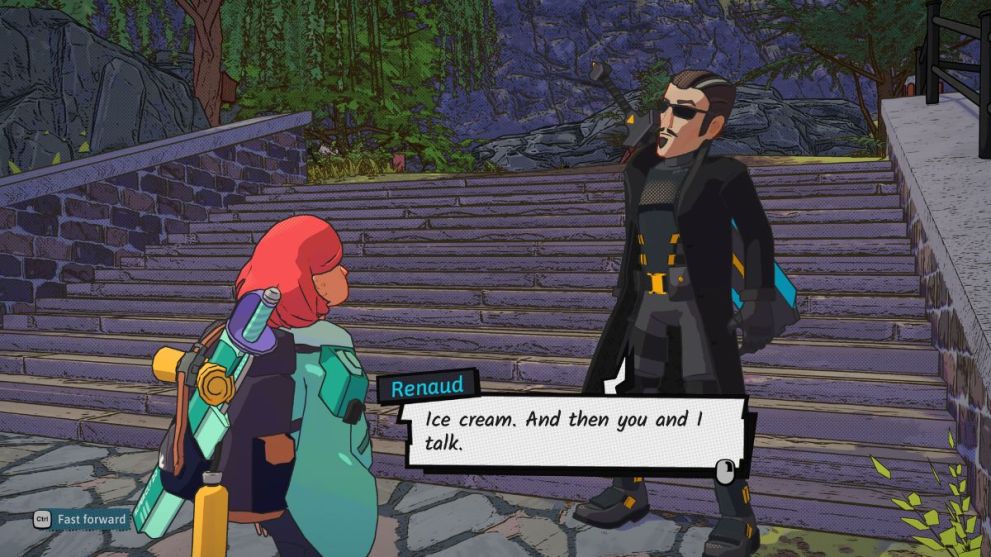
As an introverted adult who would probably never talk to a stranger in a tourist spot, it’s liberating to approach and bond with so many unique characters in Dungeons of Hinterberg.
Spending time with these characters isn’t just for getting to know them; it also comes with many gameplay benefits. Like Persona, spending your evening with a particular character can raise one of your four social stats – Amusement, Familiarity, Relaxation, and Renown.
Furthermore, it can unlock more gameplay perks, like new Attack Conduits (more on that later) or more MP slots. There are also more interesting ones, such as the breakfast selection option that you get by getting acquainted with Marina. With this, you can choose one of three breakfast cuisines to eat every morning to increase your HP slot, Mana slot, or Attack Conduit recharge rate before heading into a dungeon.
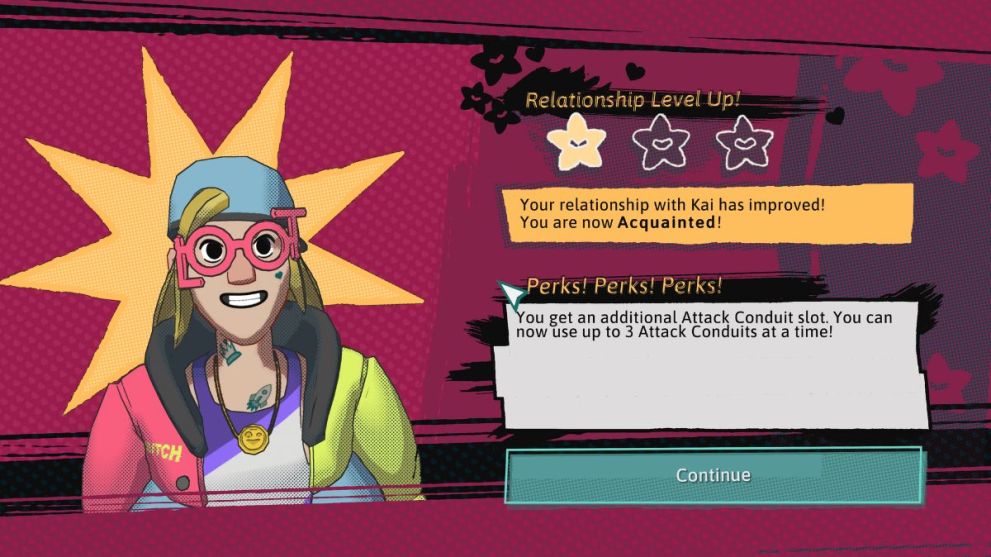
It’s admirable how effectively these gameplay perks synergize with the personality of the characters who provide them. For instance, raising your bond with Renaud, one of the best slayers in Hinterberg, can unlock a combo counter, allowing you to stack combos in combat to gain passive boosts like increased MP regeneration rate. Likewise, raising your bond with a Hinterberg local like Thea can get you a key that can open all locked treasure chests in the area and get you hefty discounts at most village shops.
A similar synergy carries over to your social stats as well. Spending time with someone like Thea will increase your Familiarity, whereas hanging out with a renowned slayer like Renaud will increase your Renown.

Like Persona, certain characters won’t spend time with you until you have raised a particular stat to a certain level. Hence, if you want to become best friends with Renaud, you would first need to increase your Renown to at least 80.
It’s worth noting that you can’t actually date anyone in Dungeons of Hinterberg, which works in its favor, as dating can more often than not feel forced and out of place in games like these, and Hinterberg feels like a more genuine and wholesome experience without it.
You can find which character provides what gameplay perks in the People’s tab in Luisa’s tourist guide. Narratively, it’s a bit immersion-breaking, as Luisa herself mocks it by saying that’s no way to make friends. Gameplay-wise, however, it can save up a lot of your time, especially if you’re looking to unlock a certain ability or raise a certain stat quickly.
However, since there are more than a dozen characters, it feels almost impossible to bond with and experience everyone’s story in a single playthrough, but that’s okay because Hinterberg feels like a place you would want to come back to over and over again.
More than any character, however, I enjoyed spending time with Luisa. She’s a very likable protagonist, mainly because she is so easy to relate to.
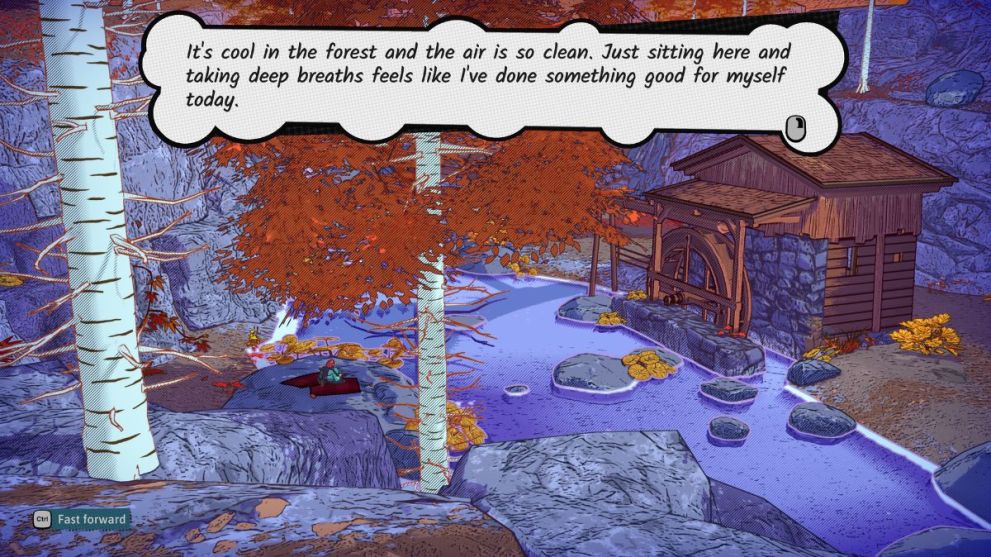
Like most young adults, she’s always in conflict with her inner state. Every brief moment of respite, whether it’s on a relaxing spot on top of a mountain cliff or an evening boat ride in the Hinterberg lake, peels off another layer from Luisa’s past, giving us glimpses of the root of her existential crisis before she arrived in Hinterberg.
These retrospective moments with Luisa feel unprecedentedly therapeutic. They are sincere and heartfelt. It feels like a journal entry.
They reminded me of those ambient moments from the Life is Strange games where the protagonist would sit around and unravel their thoughts beneath a breathtaking background and ambient music. These quiet moments were surreal in Life is Strange, and they are equally if not more effective in Dungeons of Hinterberg.

Having a Persona-esque time structure amplifies the sense of adventure you get every morning when you go out to explore Hinterberg’s countryside, but that heightened sense would have easily been diminished if the dungeons were not so exciting to explore.
All 25 dungeons are scattered across four different overworlds of Hinterberg. These are: Doberkogel, Hinterwald, Kolmstein, and Brünnelsumpf.
All four overworlds are visually and structurally distinct and are home to different magical abilities, which you can use in combat and for solving puzzles.
Doberkogel, the first overworld you gain access to, is a pleasant hiking ground full of golden pastures and cable cars. Hinterwald, on the other hand, is an autumn-struck woods with trails leading to giant mushrooms and medieval windmills. They are all similar in length, but how you traverse and complete dungeons within them depends on the magical abilities you possess within that region.
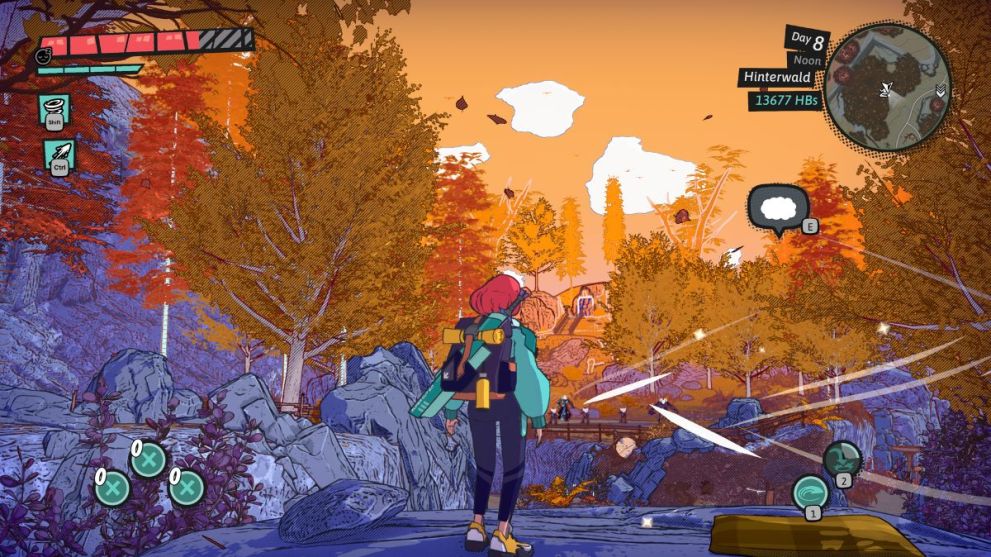
Every overworld offers two unique magic skills for you to use. The main skill is more of a traversal ability, whereas the ranged skill is the best of both worlds that aids in combat and puzzles.
As soon as you approach a dungeon, the tone drastically intensifies, like you are getting ready to undertake a cardinal task. Structurally, these dungeons feel like Zelda’s shrines, with intuitive puzzles that are challenging but satisfying to complete.
Tread off the beaten path, and you will often find a treasure chest containing stats-buffing Charms (more on that later) or a higher-tier gear piece.
Each region’s dungeons also play by the strengths of its magic abilities. For instance, one of the magic abilities in Kolmster allows you to conjure a snowboard, so the dungeons in the area feature more open spaces and feature time-gated puzzles that require you to efficiently use the snowboard.
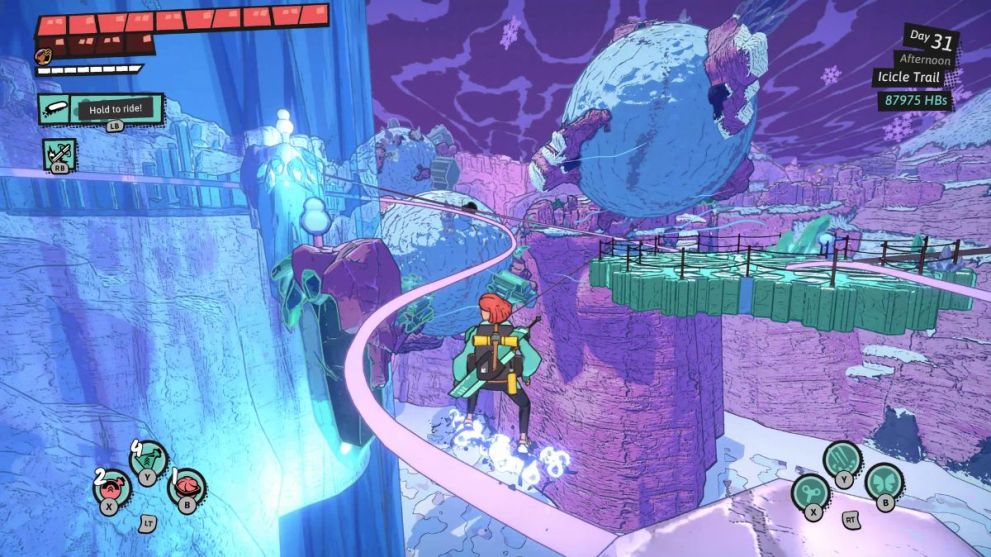
Likewise, one of the abilities in Brünnelsumpf allows you to conjure an electric ball, which you can use to solve many pinball-esque puzzles in the dungeons of that area.
It can take up to 20-25 minutes to finish a dungeon in Dungeons of Hinterberg. They all feel surprisingly hand-crafted, with unique and cleverly designed puzzles that reward experimentation and curiosity.
Like every other aspect of Dungeons of Hinterberg, puzzles draw quite a bit from many modern action-adventure titles. Some in Hinterwald are very reminiscent of the flame explosive puzzles in the first Darksiders, whereas some in Kolmstein reminded me of the rune puzzles in the latest God of War titles.
That said, it’s also the area where Dungeons of Hinterberg really push the needle in terms of creativity and complexity, with some mid to late-game dungeons forcing you to rethink your approach to tackling puzzles.
There is one called Snow Summit in Kolmstein, whose final puzzle made me both infuriated and enchanted at the same with its sheer sense of scale.
As you progress the story, you gain access to more dungeons in every region of Hinterberg, and you are free to hop onto whichever ones you want.
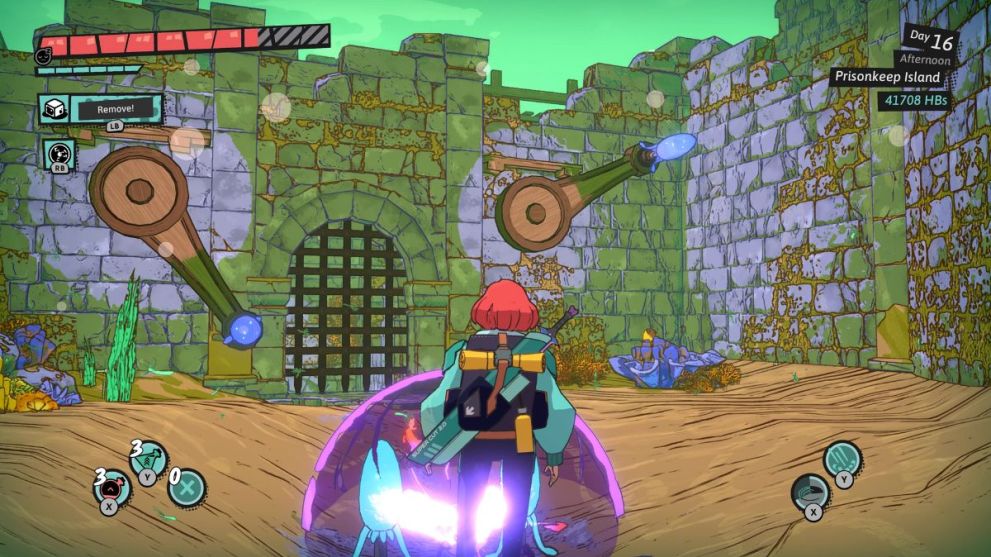
It’s always refreshing to take a break from clearing dungeons in one region and go back to another, as it forces you to readjust your muscle memory to the magical abilities of that area.
This is also why dungeon hopping never becomes a chore in Dungeons of Hinterberg, as you can always switch gears and explore a completely different one.
That said, sometimes, it can also make things frustrating, particularly when going from Brünnelsumpf to Hinterwald. There were instances where I wished I had access to Brünnelsumpf’s Jelly Cube ability in Hinterwald, as it would have made certain puzzles less tedious.
Not every dungeon is perfect in Dungeons of Hinterberg, with one tier 9 dungeon in Brünnelsumpf feeling too simple with a copy-paste design spread throughout its three areas.
However, there are only a few among all 25 dungeons that don’t feel like they were lovingly crafted, but it’s such a small number that it’s easy to look past them amidst all the spectacular ones.
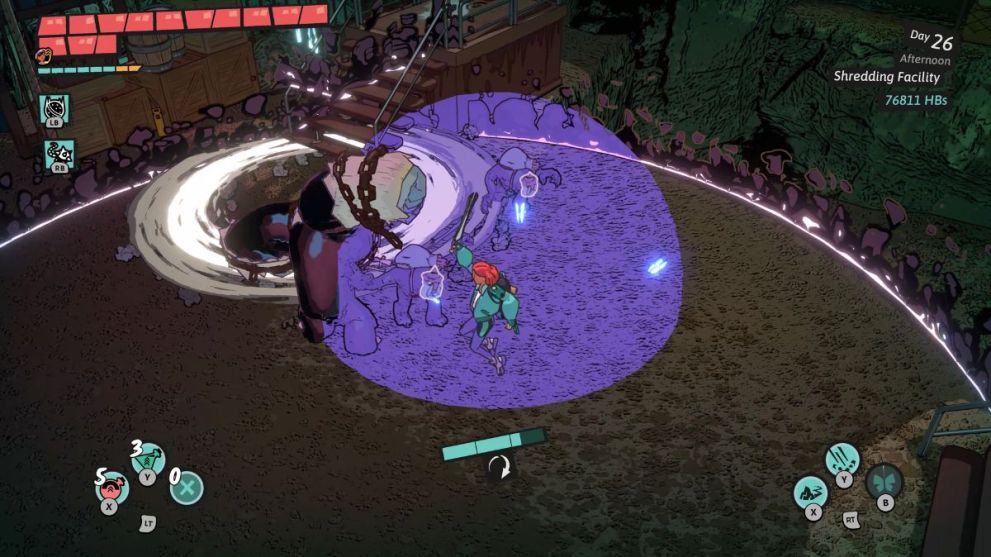
One area where Dungeon of Hinterberg doesn’t feel quite as impeccable is its combat. It’s not like the moment-to-moment action isn’t satisfying, but the lack of enemy variety and combat tools makes it repetitive after 20 hours. Some prolonged late-game encounters also hurt the game’s overall pacing.
That said, I still enjoyed using most of the Attack Conduits, which are special abilities in Dungeons of Hinterberg, and tinkering with all the different stats-buffing Charms to boost my combat efficiency was always a nice distraction from solving puzzles and building relationships.
Dungeons of Hinterberg’s combat does get its moment when you are about to take down one of the four dungeon bosses. These gigantic monsters based on mythical creatures from the Alps are tricky to beat, especially since you have to find a way to lower their shields before dealing any damage.

Boss fights in Dungeons of Hinterberg are memorable encounters that test your combat skills, especially at the highest difficulty. I just wish there were more of these and fewer of those regular monster encounters in other dungeons.
For the most part, Dungeons of Hinterberg is a polished experience on PC, but not without its share of quality-of-life problems. One issue that particularly bothered me was Luisa’s bizarre habit of excitedly diving from a surface and falling into the pit to meet an untimely death.
Naturally, it can be frustrating, especially when it happens after solving a tedious puzzle or clearing a group of monsters, and you have to re-run those encounters as the game loads up from an earlier location.
It’s also worth pointing out that if you die and boot back up, you will have to loot the chest in the area again since the game doesn’t have a separate progression system for collectibles and loot.
I also experienced a bizarre glitch in one of the dungeons in Brünnelsumpf where my character died, but she didn’t quite die, and I could still use my Attack Conduits to deal damage to enemies. Eventually, I did manage to kill all the enemies, but since I couldn’t do anything else, I had to restart the checkpoint, which surprisingly kicked off in that same area but no enemies. A positive glitch, if I must add.
However, these were just minor inconveniences in an otherwise stellar experience but still worth pointing out.
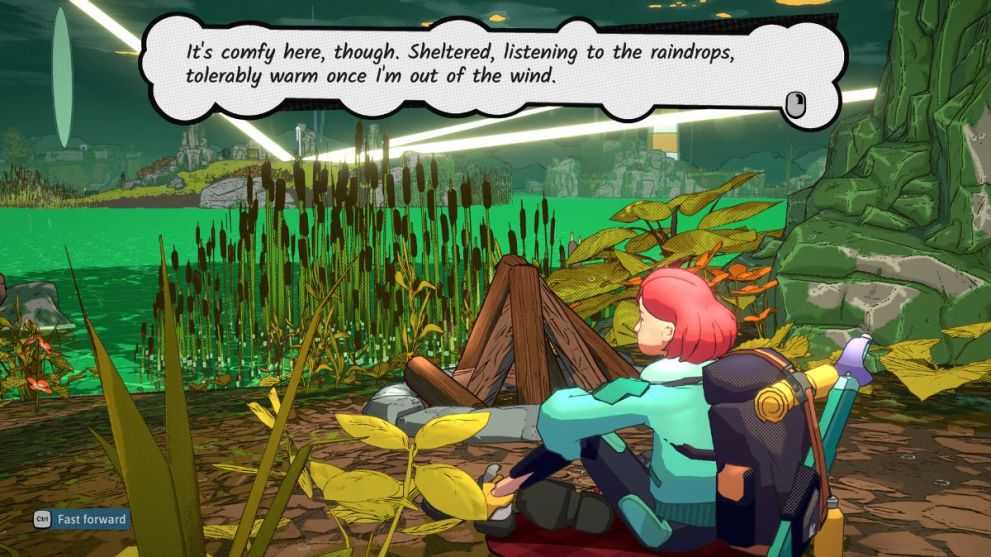
Whether you spend an evening under a campfire with other slayers discussing nerdy stuff, snowboarding gleefully across the Alps valley, wracking your brains to solve another puzzle in one of its many spectacular dungeons, or fritter away a primordial morning retrospecting alone in the woods, there is an idyllic charm to everything Dungeons of Hinterberg has to offer.
It immaculately captures the idyllic spirit of a small mountain village with its vibrant characters, and the heightened sense of adventure that comes from exploring its many intricately designed magical dungeons. But between allowing you to make friends and doing magic shenanigans, the best thing it does is it never let you forget that the real reason you’re here in Hinterberg is to relax.
Halfway through the story, you may feel obliged to clear dungeons instead of relaxing at a beautiful spot. But the game understands that notion and never forces you to choose one over another. Sometimes, it even encourages you to pick the latter, and there’s one particular instance in which when you choose to relax, Luisa asks herself why is it that she feels her time is worth something if it yields something tangible.
Dungeon of Hinterberg is quick to negate your intrusive thoughts and remind you that you are on vacation, and that is its biggest achievement. It does this constantly by providing you with tools to carve your own relaxing or adventurous vacation without imposing many restrictions.
Hence, despite having a predictable story, refurbished design elements, and some minor quality-of-life issues, Dungeons of Hinterberg feels like a one-of-a-kind, refreshing holiday experience.
- Captivating art style.
- Vibrant characters.
- Clever puzzles.
- Cool magic abilities.
- Likeable protagonist.
- Very comfy and relaxing.
- Lack of enemy variety.
- Repetitive combat.
- Minor quality-of-life issues.














Updated: Jul 18, 2024 11:43 am